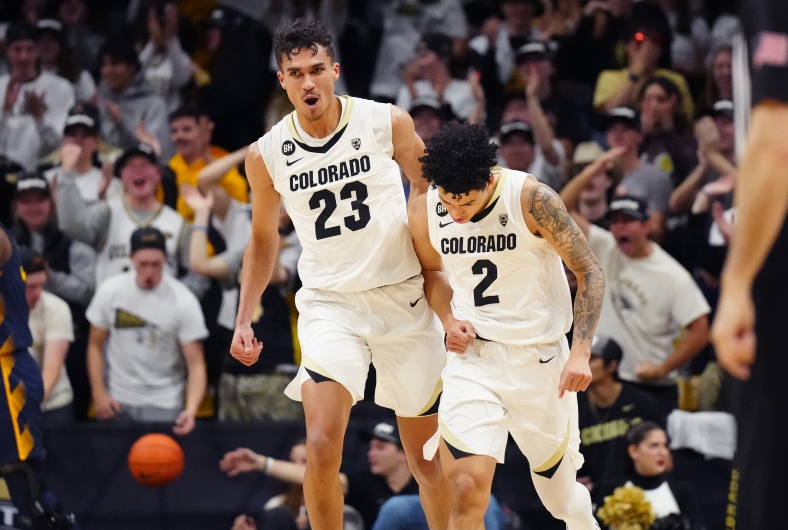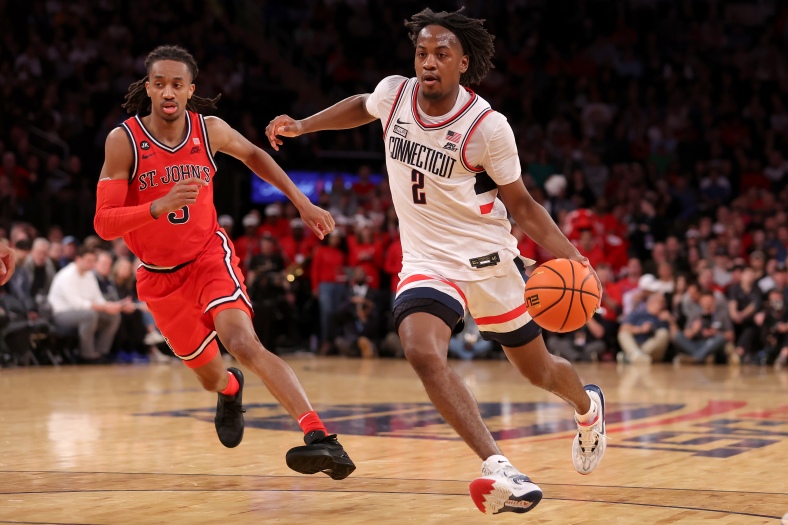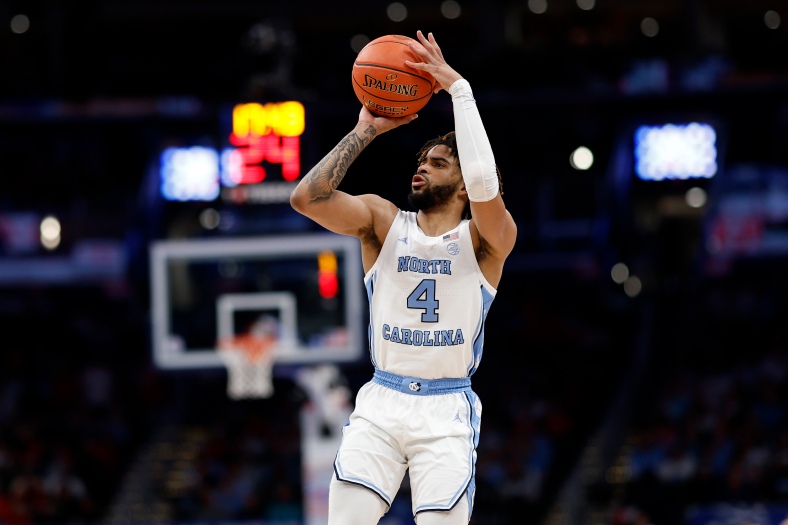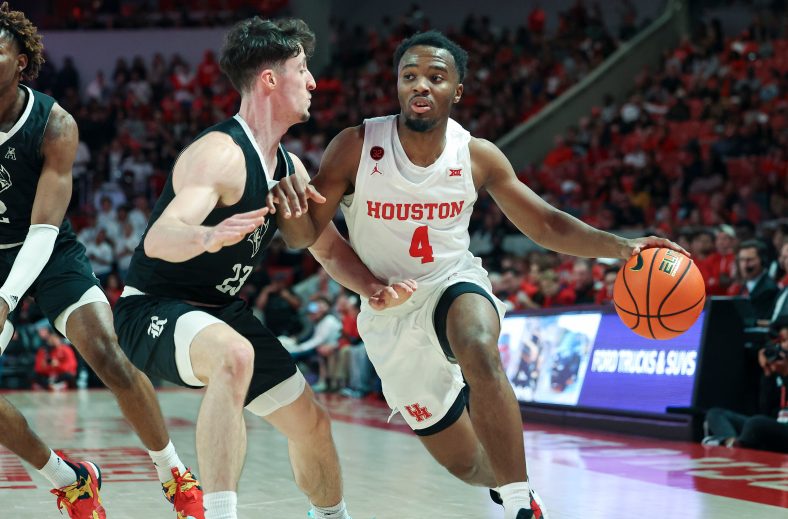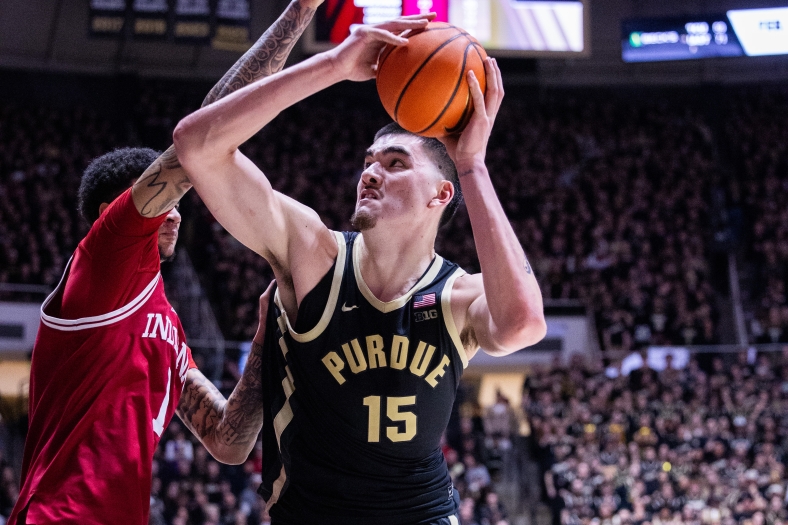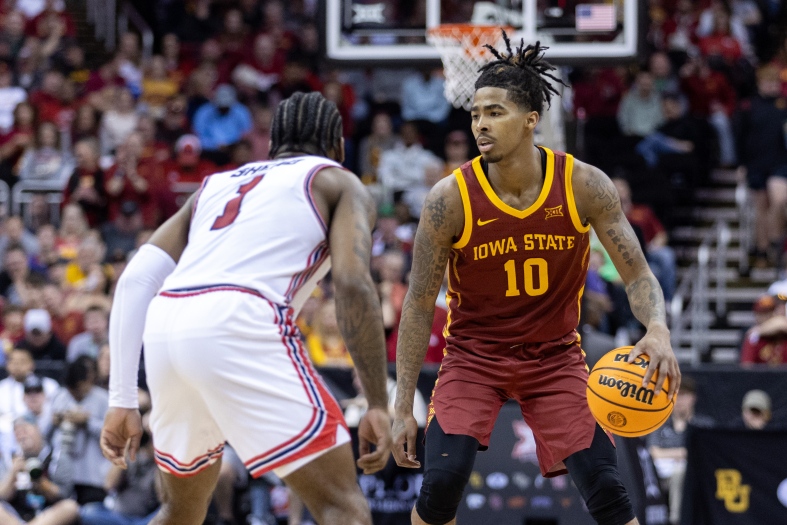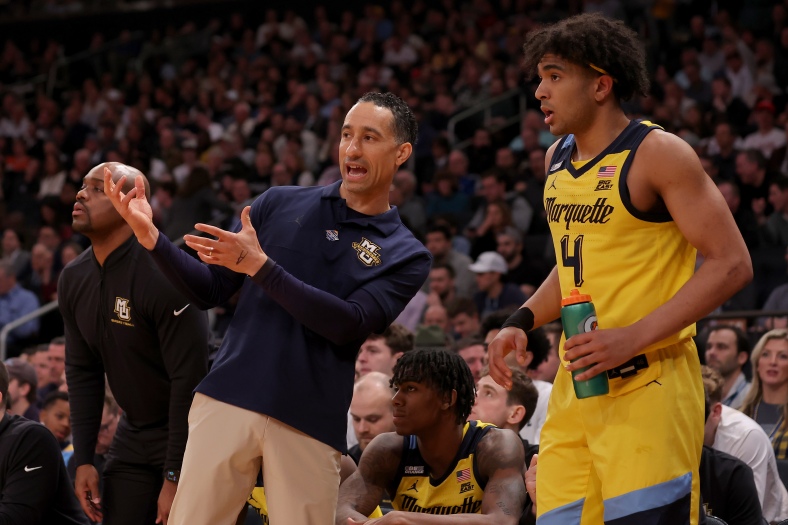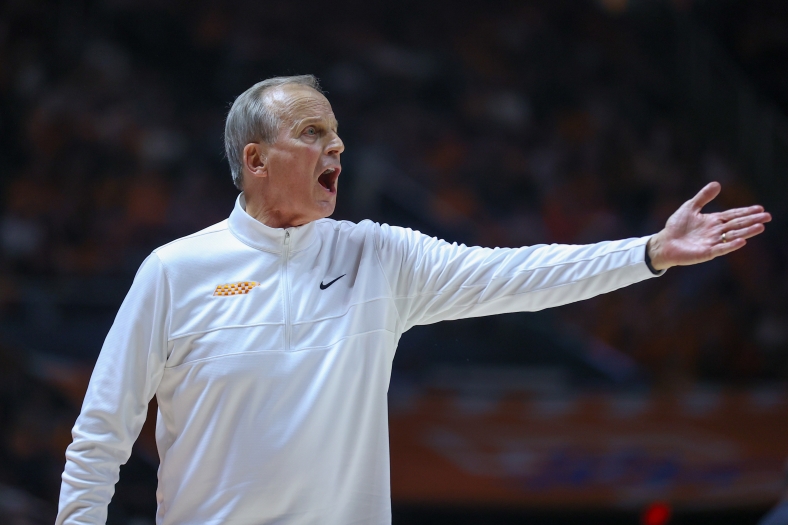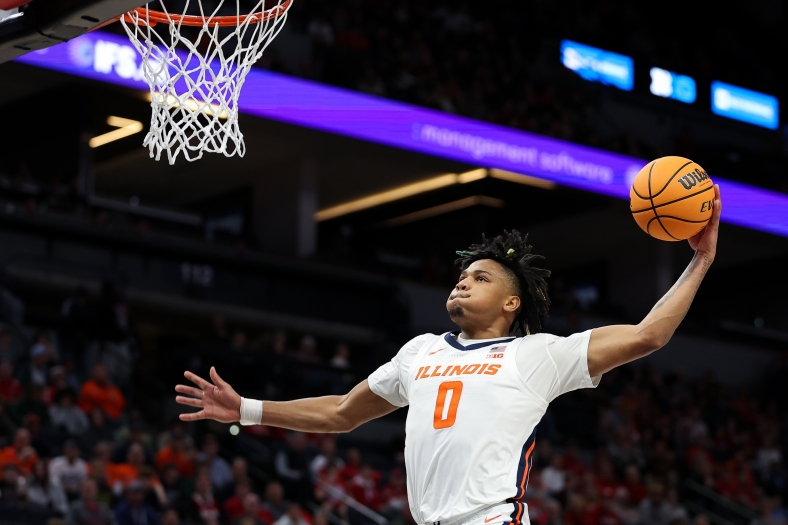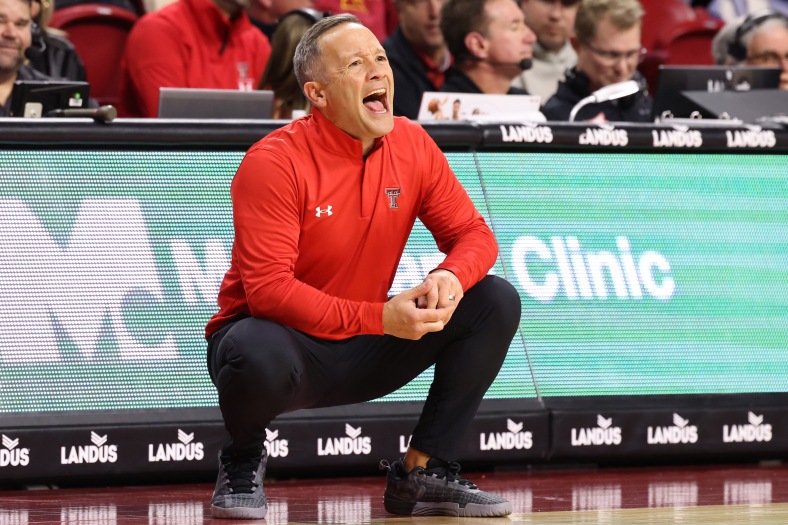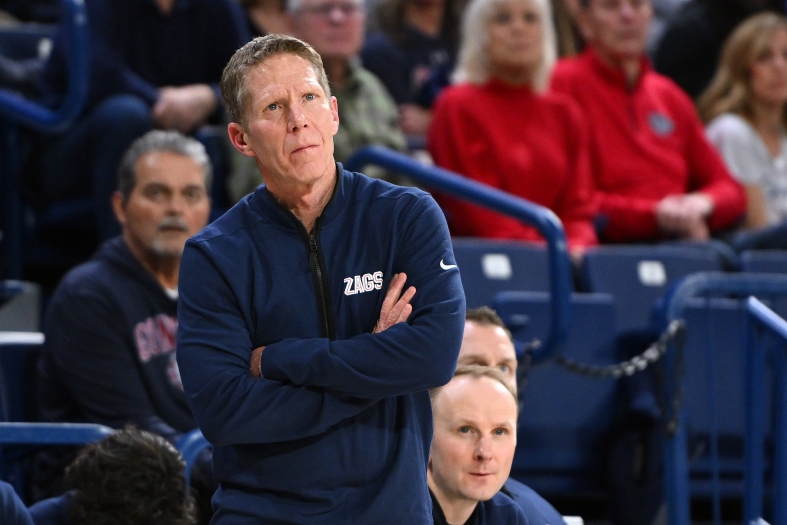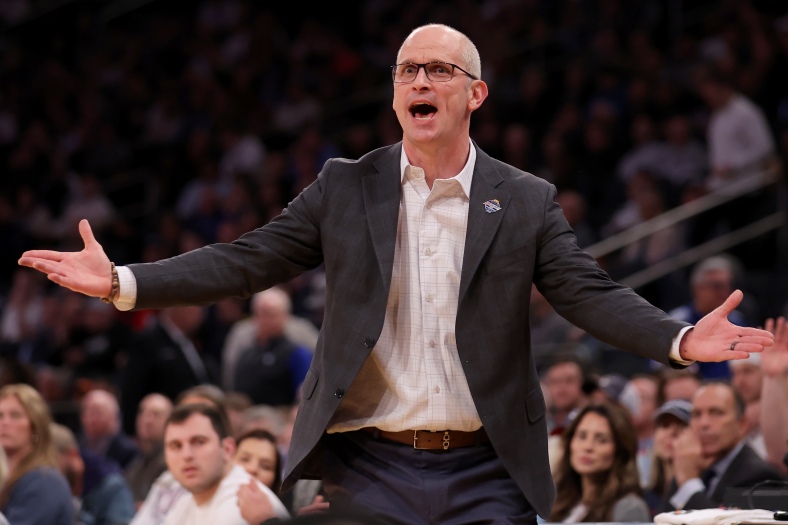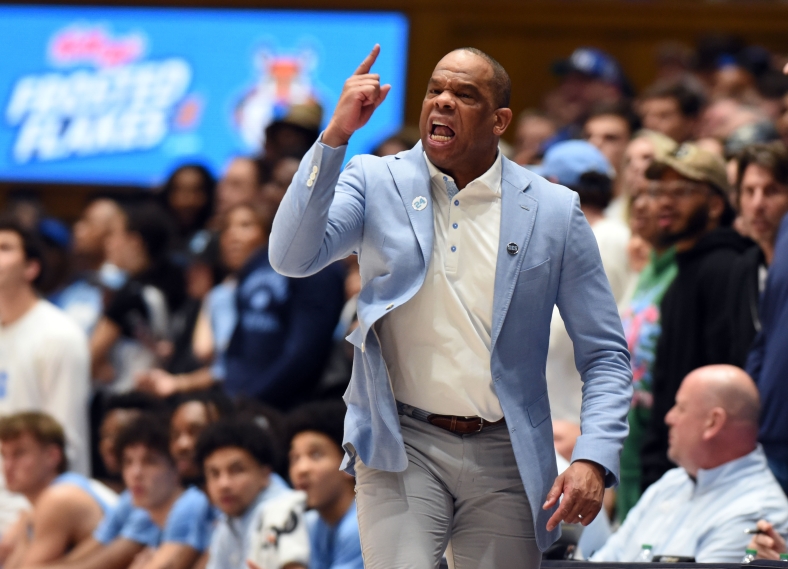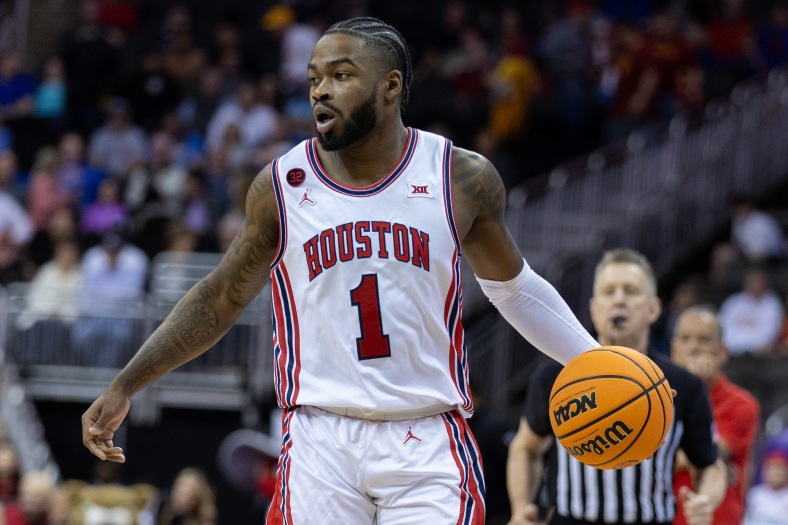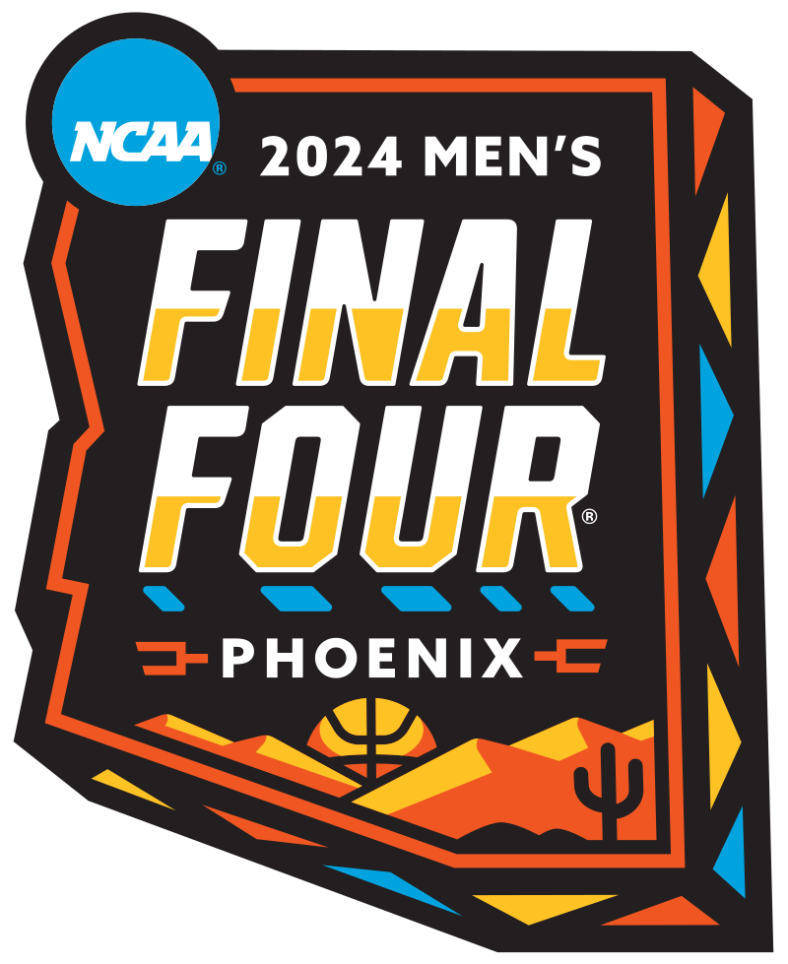Movie quote of the day:
“I happen to know everything there is to know about maple syrup. I love maple syrup! I love maple syrup on pancakes, I love it on pizza! Sometimes I take maple syrup and put a little in my hair when I’ve had a rough week. What do you think holds it up, slick?”
– Jeremy Grey, “Wedding Crashers” (2005)
Apologies that I’ve been absent from my blog for so long. I understand it’s pretty much outdated now, I had every intention of finishing this post the week following the draft, but I’ve been incredibly busy lately. I’ve had some family trouble the last few weeks, I was trying to find a place to live for when I attend grad school next year, and then I got busy re-watching all the movies in the Marvel Cinematic Universe before going to see “Avengers: Infinity War.” Anyway, I’m back to giving this blog my attention and my first post after my hiatus will be my own NFL draft grades for all 32 teams.

Josh Rosen (UCLA) with NFL commissioner Roger Goodell after being selected as the number ten overall pick to the Arizona Cardinals in the first round of the 2018 NFL Draft at AT&T Stadium. Mandatory Credit: Tim Heitman-USA TODAY Sports
Arizona Cardinals
Selections: QB Josh Rosen (Round: 1 Pick: 10), WR Christian Kirk (Round: 2 Pick: 47), C Mason Cole (Round: 3 Pick: 97), RB Chase Edmonds (Round: 4 Pick: 134), CB Chris Campbell (Round: 6 Pick: 182), and G Korey Cunningham (Round: 7 Pick: 254)
Grade: A-
I really like what Arizona did in the draft. First of all, the Cardinals managed to trade up and get the second-best, and most NFL ready, quarterback in this class in Josh Rosen and gave up almost nothing to get him. I know that they signed Sam Bradford and Mike Glennon in the offseason, but I won’t be surprised if Rosen is the starter for week one. Then, they filled some needs by drafting one of the top wide receivers and centers in this class in Christian Kirk and Mason Cole to help their new investment at quarterback. Finding a running back to back up David Johnson was also a need and Arizona drafted Chris Edmonds for that role – who was highly productive at a small college and should make an interesting compliment to Johnson. The only thing that I didn’t like about Arizona’s draft was waiting sixth round to add some help in the secondary, but that happens when you trade up to get a quarterback so it’s not that big of a deal.
Bottom line: I wasn’t sure Arizona had the assets to trade up and get one of the top quarterbacks in this class, but was proven wrong. I think Rosen is a perfect fit in Arizona too. There’s no pressure on him to play right away with Sam Bradford on roster. There’s also a bunch of veterans on the roster that can keep him focused and his head screwed on straight. There’s already some pretty good weapons in Arizona and the Cardinals gave him even more through the draft by adding Kirk, Cole, and Edmonds.

Alabama Crimson Tide wide receiver Calvin Ridley (3) reacts during the third quarter against the Clemson Tigers in the 2018 Sugar Bowl college football playoff semifinal game at Mercedes-Benz Superdome. Mandatory Credit: Chuck Cook-USA TODAY Sports
Atlanta Falcons
Selections: WR Calvin Ridley (Round: 1 Pick: 26), CB Isaiah Oliver (Round: 2 Pick: 58), DL Deadrin Senat (Round: 3 Pick: 90), RB Ito Smith (Round: 4 Pick: 126), WR Russell Gage (Round: 6 Pick: 194), and LB Foyesade Oluokun (Round: 6 Pick: 200)
Grade: B
I feel like Atlanta hit home runs with its first two picks. Drafting Calvin Ridley at No. 26 is tremendous value and actually fills a need – the Falcons needed to find a No. 3 receiver after the departure of Taylor Gabriel. I really like the thought of him, Julio Jones, Mohamed Sanu, Austin Hooper, and Matt Ryan in the same passing offense. You can also never have enough depth at cornerback in today’s NFL and scooping up Isaiah Oliver in the late second round is a huge steal – many considered him to be a first-round talent. However, the rest of the Falcons’ draft class was kind of mediocre. Taking Senat in the third round felt like a reach, but it at least fills a need. Also, I think I understand why Atlanta took a running back in the fourth round since Tevin Coleman is a free agent next year. Smith is a huge reach though and I’m not sure he’s going to pan out in Atlanta. The Falcons have a deep running back rotation and a lot of draft analysts considered Smith to be a seventh-round pick or an undrafted free agent.
Bottom line: Atlanta did a great job the first two days of the draft. The Falcons filled needs and got pretty good value with each of their selections in the first three rounds. Calvin Ridley and Isaiah Oliver are first-round talents and will contribute immediately. However, I think Atlanta’s day three picks were head scratchers and really brought down this team’s overall draft grade.

Lamar Jackson (Louisville) is selected as the number thirty-two overall pick to the Baltimore Ravens in the first round of the 2018 NFL Draft at AT&T Stadium. Mandatory Credit: Tim Heitman-USA TODAY Sports
Baltimore Ravens
Selections: TE Hayden Hurst (Round: 1 Pick: 25), QB Lamar Jackson (Round: 1 Pick: 32), T Orlando Brown (Round: 3 Pick: 83), TE Mark Andrews (Round: 3 Pick: 86), CB Anthony Averett (Round: 4 Pick: 118), LB Kenny Young (Round: 4 Pick: 122), WR Jaleel Scott (Round: 4 Pick: 132), WR Jordan Lasley (Round: 5 Pick: 162), S DeShon Elliott (Round: 6 Pick: 190), T Greg Senat (Round: 6 Pick: 212), C Bradley Bozeman (Round: 6 Pick: 215), and DL Zach Sieler (Round: 7 Pick: 238)
Grade: B+
I thought Baltimore did an excellent job maneuvering down the draft board in the first round. The Ravens clearly had two players they wanted (Hayden Hurst and Lamar Jackson), but knew that picking either of them with the No. 16 pick was a reach, so they kept moving back until the value was there. Then, they surprised all of us by trading back into the first round, using some of the picks they acquired earlier when trading back, to select their quarterback of the future in Lamar Jackson. I really love the Jackson pick. Joe Flacco has to be the most boring quarterback in the NFL, and in Ozzie Newsome’s last draft as Baltimore’s general manager, he gives the organization a dynamic, exciting player to be Baltimore’s future franchise quarterback. I even thought Baltimore’s mid-round picks were solid. While I’m not that sold on Orlando Brown as a prospect, he has the skills and build to become a good offensive tackle in the NFL. The Ravens also got great value in picking tight end Mark Andrews, cornerback Anthony Averett, offensive tackle Greg Senat, and wide receiver Jordan Lasley – who some have said is a first-round talent if it weren’t for his character concerns. I just wish Baltimore had addressed the interior of its offensive line though before the sixth round, which is why I couldn’t give the Ravens a higher grade.
Bottom line: I’m not sure which I loved more about Baltimore’s draft: Trading back until the value was there to get the players you wanted, or trading back into the first round to get a dynamic player at quarterback. The Ravens took advantage of a deep tight end class by selecting two of them early to help out Flacco and Jackson. Then they got great value with most of their picks in the later rounds.

Josh Allen is selected as the number seven overall pick to the Buffalo Bills in the first round of the 2018 NFL Draft at AT&T Stadium. Mandatory Credit: Matthew Emmons-USA TODAY Sports
Buffalo Bills
Selections: QB Josh Allen (Round: 1 Pick: 7), LB Tremaine Edmunds (Round: 1 Pick: 16), DL Harrison Phillips (Round: 3 Pick: 96), CB Taron Johnson (Round: 4 Pick: 121), S Siran Neal (Round: 5 Pick: 154), G Wyatt Teller (Round: 5 Pick: 166), WR Ray-Ray McCloud (Round: 6 Pick: 187), and WR Austin Proehl (Round: 7 Pick: 255)
Grade: B+
Buffalo made a pair of decisions to trade up in the first round to get its franchise quarterback in Josh Allen and the quarterback of its defense in Tremaine Edmunds. I love the decision to get Allen, I think he’s a great fit for Buffalo. I usually don’t like trading up to get a player that’s not a quarterback, but I like going up to get Edmunds because I think he’s going to be a special player at the next level. Many draft analysts considered him to be a top five overall player in this class. He’s only 19 years old and has barely begun to scratch the surface of his abilities. As for the rest of Buffalo’s draft class, Harrison Phillips was a huge steal in the third round – some people considered him a first-round pick early in the draft process – and he fills a need with Kyle Williams getting up there in age and Adolphus Washington soon to be a free agent. The Bills also added some needed depth to its secondary, and got good value with both picks, by adding Taron Johnson and Siran Neal. However, I feel like for the Bills to stay a playoff contender in the AFC, they should’ve addressed the offensive line early in the draft.
Bottom line: I really like what Buffalo did in the draft. Allen and Edmunds have very high ceilings and could end up being two cornerstone pieces for this franchise. However, after losing Cordy Glenn, Richie Incognito, and Eric Wood in the same offseason, I felt like rebuilding the offensive line should’ve been more of an emphasis.

Maryland Terrapins wide receiver DJ Moore (1) runs with the ball against the Rutgers Scarlet Knights during the first half at High Point Solutions Stadiun. Mandatory Credit: Gregory J. Fisher-USA TODAY Sports
Carolina Panthers
Selections: WR D.J. Moore (Round: 1 Pick: 24), CB Donte Jackson (Round: 2 Pick: 55), CB Rashaan Gaulden (Round: 3 Pick: 85), TE Ian Thomas (Round: 4 Pick: 101), LB Marquis Haynes (Round: 4 Pick: 136), LB Jermaine Carter, Jr. (Round: 5 Pick: 161), LB Andre Smith (Round: 7 Pick: 234), and DL Kendrick Norton (Round: 7 Pick: 242)
Grade: B-
I like D.J. Moore as a player. He’s quick, agile, and a good pass catcher, but I thought taking him in the first round was a little bit of a reach. I understand the logic though. Carolina has struggled to find a good wide receiver since releasing Steve Smith, Sr. a few years ago and the organization wants to give Cam Newton more weapons. So I don’t hate the decision to take Moore, but there was a better wide receiver still available in Calvin Ridley. I honestly don’t care for Carolina’s second-round pick at all. Donte Jackson isn’t very big (just 5’11” 175 pounds) and he’ll have to cover tall, physical receivers in the NFC South like Julio Jones, Mike Evans, and Michael Thomas six times a season. I’m just not sure he’s going to work out defensively, and Rahsaan Gaulden is more of a slot cornerback, so I’m not sure he’s going to be much help either in Carolina’s secondary. I do really like the Panthers’ decision to take tight end Ian Thomas in round four though. He’s a very athletic pass catcher that should be able to stretch the defense. Also, taking three linebackers on the third day seems like a telling sign that Thomas Davis’ time in Carolina is about done – I don’t hate that decision either.
Bottom line: I like Moore to put up good numbers in Carolina’s offense, but I felt like he was reach. I’m really not sure how much of an impact the cornerbacks that the Panthers drafted will make either. The only thing that saved this organization’s draft grade was its day three picks.

Roquan Smith (Georgia) with NFL commissioner Roger Goodell after being selected as the number eight overall pick to the Chicago Bears in the first round of the 2018 NFL Draft at AT&T Stadium. Mandatory Credit: Tim Heitman-USA TODAY Sports
Chicago Bears
Selections: LB Roquan Smith (Round: 1 Pick: 8), C James Daniels (Round: 2 Pick: 39), WR Anthony Miller (Round: 2 Pick: 51), LB Joel Iyiegbuniwe (Round: 4 Pick: 115), DL Bilal Nichols (Round: 5 Pick: 145), Edge Kylie Fitts (Round: 6 Pick: 181), and WR Javon Wims (Round: 7 Pick: 224)
Grade: A
I know Chicago really wanted to help Mitch Trubisky in the first round, but the organization chose to take best player available instead in linebacker Roquan Smith. Not only was he the best player on the board, but he also fills a need defensively – the Bears needed to add some depth to that position since Danny Trevathan and Nick Kwiatkoski are soon to be free agents. I even like who Chicago picked in the second round. James Daniels was a steal at pick No. 39 – many considered him a first-round talent. He can be plugged in at any position in the interior of Chicago’s offensive line and will create a lot of holes for running back Jordan Howard. Miller was one of the more underrated wide receiver prospects in this draft. He has a different skill set than Allen Robinson and could end up being a good compliment to him. Then the Bears added some needed depth defensively to positions of need with their day three picks by selecting Joel Iyiegbuniwe, Bilal Nichols, and Kylie Fitts.
Bottom line: Overall, I thought this was an excellent draft by Chicago despite not having very many picks. The Bears managed to improve defensively by adding Smith and drafted some depth to that side of the ball, but they also gave Trubisky some help offensively.

Ohio State Buckeyes center Billy Price (54) in action against the Southern California Trojans in the 2017 Cotton Bowl at AT&T Stadium. Mandatory Credit: Matthew Emmons-USA TODAY Sports
Cincinnati Bengals
Selections: C Billy Price (Round: 1 Pick: 21), S Jessie Bates (Round: 2 Pick: 54), Edge Sam Hubbard (Round: 3 Pick: 77), LB Malik Jefferson (Round: 3 Pick: 78), RB Mark Walton (Round: 4 Pick: 112), CB Davontae Harris (Round: 5 Pick: 151), DL Andrew Brown (Round: 5 Pick: 158), CB Darius Phillips (Round: 5 Pick: 170), QB Logan Woodside (Round: 7 Pick: 249), G Rod Taylor (Round: 7 Pick: 252), and WR Auden Tate (Round: 7 Pick: 253)
Grade: A-
Even though I didn’t expect him to get picked in the first round because of his shoulder injury, I love the move by Cincinnati to take Billy Price in the first round. He was considered the top center in this class before getting injured. He’s a mean, nasty center from a school with a ton of talent. With him and Cordy Glenn, Cincinnati’s offensive line should be much better this year. The day two picks were just as good for the Bengals too. Jessie Bates finally gives them a true free safety, and Sam Hubbard and Malik Jefferson were steals in the third round and filled needs. I even like the decision to draft Mark Walton (even though that means Gio Bernard is likely leaving town). He ought to make a great compliment to Joe Mixon in Cincinnati’s backfield. Then the Bengals added some needed depth to their defense by taking cornerbacks Davontae Harris, Darius Phillips, and defensive lineman Andrew Brown. I even like drafting quarterback Logan Woodside in the seventh round. They needed a backup quarterback with A.J. McCarron now in Buffalo and Woodside could develop into a serviceable one.
Bottom line: Cincinnati is going to be a much better team after this draft class. The Bengals filled their needs and got remarkable value in the process. As much as I love the Price pick, I would’ve liked the Bengals to focus a little bit more on the offensive line.

Cleveland Browns first round picks, Baker Mayfield (left) and Denzel Ward show off Browns jerseys during a press conference at the Cleveland Browns training facility. Mandatory Credit: Ken Blaze-USA TODAY Sports
Cleveland Browns
Selections: QB Baker Mayfield (Round: 1 Pick: 1), CB Denzel Ward (Round: 1 Pick: 4), G Austin Corbett (Round: 2 Pick: 33), RB Nick Chubb (Round: 2 Pick: 35), Edge Chad Thomas (Round: 3 Pick: 67), WR Antonio Callaway (Round: 4 Pick: 105), LB Genard Avery (Round: 5 Pick: 150), WR Damion Ratley (Round: 6 Pick: 175), and CB Simeon Thomas (Round: 6 Pick: 188)
Grade: B
I’m really not that crazy about Cleveland’s decision to take Baker Mayfield with the No. 1 overall pick, but I’m starting to warm up to it. Mayfield is somewhat of a good fit with the Browns. They’re an underdog franchise and he’s an underdog quarterback that has been doubted his whole life. Mayfield isn’t a guy I want to bet against and there’s a slight chance he ends up being very good in the NFL. I really like the rest of Cleveland’s draft though. I think Denzel Ward is a future Pro Bowler and Nick Chubb should be a very good NFL starting running back. Austin Corbett is a little bit of a head scratcher. He’s likely going to get a chance at offensive tackle, but most people think he’ll eventually kick inside to guard, which is why picking him is surprising because the Browns are set in the interior of their offensive line. Chad Thomas is an interesting prospect because a lot of scouts say he has the traits to potentially be a hidden gem in this class. He’s just a little raw and they believe that playing in a four-man defensive front will benefit him greatly – keep in mind, Cleveland runs a four-man defensive front now. I’m not that crazy about Cleveland taking Antonio Callaway though because of his off-the-field antics, but he’s a talented player. Maybe he can keep his nose clean and develop into a good player in Cleveland.
Bottom line: After having a chance to think about it, I don’t dislike the decision to take Mayfield as much as I did when it originally happened. I’m still not sure he’s the best fit in Cleveland though. The Browns managed to get some good players, but in my opinion, there were better options available on the board. All in all, not a terrible draft class for the Browns.

NFL commissioner Roger Goodell with Leighton Vander Esch is selected as the number nineteen overall pick to the Dallas Cowboys in the first round of the 2018 NFL Draft at AT&T Stadium. Mandatory Credit: Matthew Emmons-USA TODAY Sports
Dallas Cowboys
Selections: LB Leighton Vander Esch (Round: 1 Pick: 19), G Connor Williams (Round: 2 Pick: 50), WR Michael Gallup (Round: 3 Pick: 81), Edge Dorance Armstrong (Round: 4 Pick: 116), TE Dalton Schultz (Round: 4 Pick: 137), QB Mike White (Round: 5 Pick: 171), LB Chris Covington (Round: 6 Pick: 193), WR Cedric Wilson (Round: 6 Pick: 208), and RB Bo Scarbrough (Round: 7 Pick: 236)
Grade: A-
Leighton Vander Esch is going to give Dallas adequate depth at linebacker the first day he steps foot in the facility, and potentially could be a replacement for Sean Lee. So, I thought that was an excellent pick by Dallas. Since Zack Martin is going to be a free agent next year, the Cowboys needed a guard and got a versatile offensive lineman in Connor Williams – who can play every position and was projected to be a first-round pick. Considering Dallas just lost Dez Bryant and Jason Witten in the weeks leading up to the draft, I feel like the Cowboys did a good job of finding some bodies at those positions that could potentially be replacements in Michael Gallup and Dalton Schultz. I don’t think either Gallup and Schultz are long-term solutions at wide receiver and tight end, but both could still have long careers in the NFL. The rest of Dallas’ class was solid too. Dorance Armstrong will likely be a project but you can never have too much depth at edge rusher, Mike White could develop into a decent backup quarterback, and Bo Scarbrough could potentially be very good behind the Cowboys’ offensive line (although, I’m not sure I see that happening) and be able to take some of the pressure off Ezekiel Elliott.
Bottom line: I think Dallas probably got the best value of any team through this draft. The Cowboys essentially got two first-round picks in Vander Esch and Williams, and didn’t necessarily reach for any of the other players they drafted. I just wish Dallas had addressed the interior defensive line or safety at some point.

Bradley Chubb (North Carolina State) poses with NFL commissioner Roger Goodell after being selected as the number five overall pick to the Denver Broncos in the first round of the 2018 NFL Draft at AT&T Stadium. Mandatory Credit: Tim Heitman-USA TODAY Sports
Denver Broncos
Selections: Edge Bradley Chubb (Round: 1 Pick: 5), WR Courtland Sutton (Round: 2 Pick: 40), RB Royce Freeman (Round: 3 Pick: 71), CB Isaac Yiadom (Round: 3 Pick: 99), LB Josey Jewell (Round: 4 Pick: 106), WR DaeSean Hamilton (Round: 4 Pick: 113), TE Troy Fumagalli (Round: 5 Pick: 156), G Sam Jones (Round: 6 Pick: 183), LB Keishawn Bierria (Round: 6 Pick: 217), and RB David Williams (Round: 7 Pick: 226)
Grade: A
Denver got one of the biggest steals of the draft when Bradley Chubb fell in its lap at No. 5. He’s going to be a very special player in the Broncos’ defense paired with Von Miller coming off the edge. I actually really like Denver’s decision to get younger offensively through this draft too, particularly by taking pass catchers with high ceilings in Courtland Sutton, DaeSean Hamilton, and Troy Fumagalli. It’s hard to tell if Demaryius Thomas and Emmanuel Sanders’ best days are behind them, but upgrading at that position was a great idea. Running back was already one of this team’s biggest needs since releasing C.J. Anderson and I feel like the Broncos are getting a good player in Royce Freeman – who, in my opinion, could’ve been a higher pick if not for getting buried in a deep running back class. Also, finding a replacement for Aqib Talib was one of the biggest needs for this team. I doubt Isaac Yiadom will be as good of a player as Talib, but he plays a similar style and could end up being a good replacement for him. Then, they added some depth to the middle of their defense, which was a need last year, by taking Josey Jewell and Keishawn Bierria. I just wish Denver had drafted some more offensive linemen and not waited until the sixth round.
Bottom line: I wasn’t really sure what Denver was going to do in this draft, but I really like the direction the Broncos went. Getting the top defensive player in this class and then following that up by adding some younger pieces offensively to accommodate to new quarterback Case Keenum.

Arkansas center Frank Ragnow prepares to block (Google Images).
Detroit Lions
Selections: C Frank Ragnow (Round: 1 Pick: 20), RB Kerryon Johnson (Round: 2 Pick: 43), S Tracy Walker (Round: 3 Pick: 82), DL Da’Shawn Hand (Round: 4 Pick: 114), T Tyrell Crosby (Round: 5 Pick: 153), and FB Nick Bawden (Round: 7 Pick: 237)
Grade: B-
Detroit has had a problem running the ball the last few years, so I like Detroit’s decision to upgrade that part of its offense through the draft. Frank Ragnow is a versatile interior offensive lineman that has the body to play either guard or center. Even though I’m not that sold on Kerryon Johnson as prospect, I’m willing to give the Lions credit for finally addressing the position. The rest of Detroit’s draft class though wasn’t that impressive outside of Tyrell Crosby and Da’Shawn Hand. Crosby was considered by a few draft experts to be a borderline first-round pick, so getting him in the fifth round was a steal. Hand didn’t put up the best numbers in college, but he still has a high ceiling and maybe Matt Patricia will be able to get more out of him. I’ve said for awhile that the Lions have been at their best when they had a good defensive line, so I understand the interest in Hand.
Bottom line: I really like the decision by Detroit to upgrade its rushing offense by drafting Ragnow and Johnson, but I don’t like the decision to trade up to get Johnson because this was a very deep running back class. There wasn’t a huge need to do so. I’m also curious to know how much longer this franchise can neglect the edge rusher position.

NFL commissioner Roger Goodell with Jaire Alexander as he is selected as the number eighteen overall pick to the Green Bay Packers in the first round of the 2018 NFL Draft at AT&T Stadium. Mandatory Credit: Matthew Emmons-USA TODAY Sports
Green Bay Packers
Selections: CB Jaire Alexander (Round: 1 Pick: 18), CB Josh Jackson (Round: 2 Pick: 45), LB Oren Burks (Round: 3 Pick: 88), WR J’Mon Moore (Round: 4 Pick: 133), G Cole Madison (Round: 5 Pick: 138), P J.K. Scott (Round: 5 Pick: 172), WR Marquez Valdes-Scantling (Round: 5 Pick: 174), WR Equanimeous St. Brown (Round: 6 Pick: 207), DL James Looney (Round: 7 Pick: 232), LS Hunter Bradley (Round: 7 Pick: 239), and Edge Kendall Donnerson (Round: 7 Pick: 248)
Grade: B+
I love what my Green Bay Packers did early in this draft. They traded back with New Orleans, acquiring a first-round pick next year in the process, then traded up to take one of the top cornerbacks in this class in Jaire Alexander, and only gave up a third- and fifth-round pick to do so. Then, one of the other top cornerbacks in this class, Josh Jackson, fell in their lap in the second round and Green Bay scooped him up. Excellent job manipulating the board by first-year general manager Brian Gutekunst. Trading up into the third round to grab linebacker Oren Burks felt like a reach, but Green Bay needed a player like him defensively. His build/athleticism reminds me a lot of Kwon Alexander or Deion Jones. Burks is a slightly undersized linebacker that is athletic and can cover space. He’ll likely be used to cover running backs out of the backfield and used on passing downs, which is exactly what the Packers needed in the middle of their defense. I also really like their selections at the wide receiver position late in the draft. J’Mon Moore, Marquez Valdes-Scantling, and Equanimeous St. Brown (who was great value in the sixth round) each have size and speed and could be perfect replacements for Jordy Nelson. I won’t be shocked at all if either of them emerge as the No. 2 or No. 3 receiver in Green Bay’s offense with Aaron Rodgers throwing them the ball. Drafting specialists was a little surprising, but Green Bay has needed to find a long-term solution at punter since releasing Tim Masthay a few years ago. J.K. Scott averaged 45.6 yards per punt in college and ought to be the starter this season.
Bottom line: Green Bay’s new defensive coordinator Mike Pettine is known for building excellent pass defenses (ranking in the top 10 in that category six times from 2009-2015 with three different NFL teams) and the new Packers front office got him two really good defensive backs in Alexander and Jackson. If the secondary improves in Green Bay, this team will improve significantly this season with a healthy Rodgers back on the field.

Stanford Cardinal safety Justin Reid (8) gestures during the first quarter against the San Diego State Aztecs at Qualcomm Stadium. Mandatory Credit: Jake Roth-USA TODAY Sports
Houston Texans
Selections: S Justin Reid (Round: 3 Pick: 68), T Martinas Rankin (Round: 3 Pick: 80), TE Jordan Akins (Round: 3 Pick: 98), WR Keke Coutee (Round: 4 Pick: 103), Edge Duke Ejiofor (Round: 6 Pick: 177), TE Jordan Thomas (Round: 6 Pick: 211), LB Peter Kalambayi (Round: 6 Pick: 214), and CB Jermaine Kelly (Round: 7 Pick: 222)
Grade: B
Houston had to get younger and faster in its secondary. So, I really like the Justin Reid pick and I think he’s a great fit with the Texans. He showcased his speed at the combine (4.4) and can play either safety position. Plus, getting him in the third round was a steal. After trading away Duane Brown last year, the Texans needed to find a left tackle too and potentially found one in Martinas Rankin. He was considered one of the top offensive tackles in this class, but he could potentially kick inside to guard or center. Either way, it still fills a need because Houston had to bolster most of its offensive line. I thought Jordan Akins was a huge reach in the third round though. I’m not sure what this front office was thinking. He’s going to be an older veteran (26 years old) and he’s a tad undersized. He’s very athletic though and will be a receiving threat that will be able to stretch the defense, which is the type of tight end Houston needed. I even really like the Keke Coutee and Duke Ejiofor picks. Braxton Miller has struggled to play as a slot receiver in the NFL and Coutee is built to be a slot receiver at the next level. As for Ejiofor, having depth at edge rusher is never a bad thing.
Bottom line: Despite not having a first- and second-round pick, I still feel like Houston did a great job and put together a good class. Reid was a steal in the third round, I considered him a borderline first-round pick, and Rankin was great value in the third round. I like the Coutee and Ejiofor picks on day three, but picking Akins in the third round was a huge reach and really brought down the grade for this class.

Notre Dame Fighting Irish offensive lineman Quenton Nelson (56) runs onto the field for the game against the Wake Forest Demon Deacons at Notre Dame Stadium. Mandatory Credit: Matt Cashore-USA TODAY Sports
Indianapolis Colts
Selections: G Quenton Nelson (Round: 1 Pick: 6), LB Darius Leonard (Round: 2 Pick: 36), G Braden Smith (Round: 2 Pick: 37), Edge Kemoko Turay (Round: 2 Pick: 52), Edge Tyquan Lewis (Round: 2 Pick: 64), RB Nyheim Hines (Round: 4 Pick: 104), WR Daurice Fountain (Round: 5 Pick: 159), RB Jordan Wilkins (Round: 5 Pick: 169), WR Deon Cain (Round: 6 Pick: 185), LB Matthew Adams (Round: 7 Pick: 221), and LB Zaire Franklin (Round: 7 Pick: 235)
Grade: A
Indianapolis has had a problem along the offensive line since Andrew Luck entered the league and I think the Colts really bolstered the unit through the draft. They got one of the “elite” players in this class in guard Quenton Nelson. Then they turned around and drafted another guard in Braden Smith. With those two lining up with center Ryan Kelly, the interior of the Colts’ offensive line is going to be so much better this season. Even though taking Darius Leonard in the second round felt like a bit of a reach, I really like the pick. He was very productive in college and he fills a huge need for Indianapolis by giving the Colts a playmaker in the middle of their defense. Indianapolis also needed some help at edge rusher and managed to get two players that are a little raw, but scouts say have high ceilings in Kemoko Turay and Tyquan Lewis. I thought Indianapolis got two capable running backs with differing skill sets that could really benefit the Colts’ offense in Nyheim Hines (ran a 4.3 at the combine) and Jordan Wilkins (great size, very athletic). Also, getting Deon Cain in the sixth round was one of the biggest steals of the draft and I think he could do big things with Luck.
Bottom line: For a second-consecutive year, I thought Indianapolis general manager Chris Ballard put together a terrific draft class. The Colts filled a lot of needs and got pretty good value with every pick. Andrew Luck should be very happy with this draft class. I think this team is on the rise.

Taven Bryan (Florida) is selected as the number twenty-nine overall pick to the Jacksonville Jaguars in the first round of the 2018 NFL Draft at AT&T Stadium. Mandatory Credit: Tim Heitman-USA TODAY Sports
Jacksonville Jaguars
Selections: DL Taven Bryan (Round: 1 Pick: 29), WR D.J. Chark (Round: 2 Pick: 61), S Ronnie Harrison (Round: 3 Pick: 93), T Will Richardson (Round: 4 Pick: 129), QB Tanner Lee (Round: 6 Pick: 203), LB Leon Jacobs (Round: 7 Pick: 230), and P Logan Cooke (Round: 7 Pick: 247)
Grade: A-
Taven Bryan wasn’t drafted based off an area of need for Jacksonville, but the Jaguars chose to go best player available and adding depth to the defensive line is never a bad thing. I love that kind of thinking by a front office. Bryan was kind of a one-year wonder at Florida, but he has a high ceiling and could make that stout Jaguars defensive front even better. D.J. Chark is an excellent pick in the second round. The Jaguars really needed some more pass catchers in their offense and with Chark’s size and speed combination, he ought to play right away. Ronnie Harrison was a huge steal in the third round – he was once considered a first-round pick at one point during the draft process. I think he’s more of an in-the-box safety and might already be an upgrade over Barry Church at that position. I even like the Will Richardson pick in the fourth round. He fills a need for Jacksonville and scouts said he might be able to develop into a starting offensive tackle. Lastly, the Jaguars needed a backup quarterback to compete with Blake Bortles. I was a little surprised they waited until the sixth round to take one, but Tanner Lee is a quarterback that many scouts liked and he might be able to challenge Bortles to some extent.
Bottom line: Jacksonville has made killing off taking best player available in the draft the last few years and the Jaguars had the same approach last weekend. They made some great picks, didn’t reach for any player, and got excellent value with every pick. Jacksonville is a young team with a bright future and I think this draft class will only improve this team.

Ole Miss defensive lineman Breeland Speaks celebrates in between plays (Google Images).
Kansas City Chiefs
Selections: DL Breeland Speaks (Round: 2 Pick: 46), DL Derrick Nnadi (Round: 3 Pick: 75), LB Dorian O’Daniel (Round: 3 Pick: 100), S Armani Watts (Round: 4 Pick: 124), CB Tremon Smith (Round: 6 Pick: 196), and DL Khalil McKenzie (Round: 6 Pick: 198)
Grade: C
Usually Kansas City drafts very well, but I’m really not a fan of what Kansas City did in this draft. After losing Marcus Peters in the offseason, I felt like Kansas City should’ve tried to find his replacement through the draft because this was a very deep defensive back class, but it didn’t take a cornerback until the sixth round. Instead, the Chiefs loaded up on defensive line with their first two picks. I think both Breeland Speaks and Derrick Nnadi are good players, but trading up to get Speaks in the second round was a reach. Now, I think they’re going to try Speaks at edge rusher first, which would fill a need, but I really don’t see that working out. I don’t understand the Dorian O’Daniel pick either. Kansas City already had Reggie Ragland and spent money to acquire Anthony Hitchens this offseason, and then it added a very undersized linebacker in O’Daniel to the rotation? I just don’t get it. I think the pick that really saves this class is Armani Watts, who was a steal in the fourth round. He fills a need, can play either safety position, and should make a nice pair with Eric Berry in the backend of that defense.
Bottom line: Kansas City made more than a few head-scratching decisions in this draft. I don’t understand waiting until the sixth round to grab a cornerback after losing Peters this offseason. I thought the Chiefs used too many picks on defensive linemen. Watts is a great player though and fills a need.

NFL commissioner Roger Goodell with Derwin James as he is selected as the number seventeen overall pick to the Los Angeles Chargers in the first round of the 2018 NFL Draft at AT&T Stadium. Mandatory Credit: Matthew Emmons-USA TODAY Sports
Los Angeles Chargers
Selections: S Derwin James (Round: 1 Pick: 17), Edge Uchenna Nwosu (Round: 2 Pick: 48), DL Justin Jones (Round: 3 Pick: 84), S Kyzir White (Round: 4 Pick: 119), C Scott Quessenberry (Round: 5 Pick: 155), WR Dylan Cantrell (Round: 6 Pick: 191), and RB Justin Jackson (Round: 7 Pick: 251)
Grade: B+
The Chargers got one of the biggest steals in the draft when safety Derwin James fell in their laps at No. 17. James was one of the elite players in this class and I’m stunned he fell so far in the first round. The Chargers had a need at safety, but I wasn’t sure if they’d use a first-round pick on one. James was easily the best player available though and I love the decision to take him. Don’t look now, but defensive coordinator Gus Johnson (who used to be in Seattle) is building the next Legion of Boom secondary with the Chargers. Drafting Uchenna Nwosu in the second-round was surprising because it was a bit of a reach, but as I’ve said already, having depth at edge rusher is never a bad thing. Justin Jones will give the Chargers depth in the interior of their defensive line, which was a huge need for them. I love Kyzir White because he went to WVU, so I was very surprised when he fell to the fourth round. I didn’t understand why the Chargers took him though since they took James in the first round and both are in-the-box strong safeties. I won’t be shocked at all if White is asked to play more of a safety/linebacker hybrid position like Deone Bucannon though.
Bottom line: The Chargers have drafted very well the last few years and they put together another good class this year. They added some much needed depth on the defensive side of the ball. The only thing I wish the Chargers would’ve done is draft a true linebacker and addressed the offensive tackle position.

TCU Horned Frogs offensive tackle Joseph Noteboom (68) during the game against the West Virginia Mountaineers at Amon G. Carter Stadium. Mandatory Credit: Kevin Jairaj-USA TODAY Sports
Los Angeles Rams
Selections: T Joseph Noteboom (Round: 3 Pick: 89), C Brian Allen (Round: 4 Pick: 111), DL John Franklin-Myers (Round: 4 Pick: 135), LB Micah Kiser (Round: 5 Pick: 147), Edge Ogbonnia Okoronkwo (Round: 5 Pick: 160), RB John Kelly (Round: 6 Pick: 176), G Jamil Demby (Round: 6 Pick: 192), DL Sebastian Joseph (Round: 6 Pick: 195), Edge Trevon Young (Round: 6 Pick: 205), LB Travin Howard (Round: 7 Pick: 231), and Edge Justin Lawler (Round: 7 Pick: 246)
Grade: C+
The Rams improved their roster this offseason by signing free agents and acquiring other veterans and giving up draft picks to do so. So, it’s tough to like a team’s draft when they didn’t put much of an emphasis on it. That being said, I like the Rams’ decision to take offensive linemen with their first two picks. They really needed depth in that area. However, there are two glaring needs on the Rams’ roster – linebacker and edge rusher. The Rams don’t have true starters at either of those positions and waited until the fifth and sixth round to draft that position – although, I do really like the Micah Kiser pick. Ogbonnia Okoronkwo is an undersized edge rusher that probably won’t be able to get on the field. The other edge rushers they took, Trevon Young and Justin Lawler, were drafted in the sixth and seventh round and it’s uncertain if they’ll even make the final roster. The other pick I do really like is running back John Kelly. He wasn’t asked to do much at Tennessee, but a lot of scouts saw him as a third- or fourth-round pick. So getting him in the sixth was a steal and he could make a great backup to Todd Gurley.
Bottom line: It’s hard to make a huge impact in the draft when you don’t have a first- or second-round pick like the Rams. They drafted some players that I like in Joseph Noteboom, Brian Allen, Kiser, and Kelly. However, I feel like they really neglected the edge rusher position and I’m not sure any of the ones they drafted will make the final roster.

Minkah Fitzpatrick (Alabama) with NFL commissioner Roger Goodell after being selected as the number eleven overall pick to the Miami Dolphins in the first round of the 2018 NFL Draft at AT&T Stadium. Mandatory Credit: Tim Heitman-USA TODAY Sports
Miami Dolphins
Selections: S Minkah Fitzpatrick (Round: 1 Pick: 11), TE Mike Gesicki (Round: 2 Pick: 42), LB Jerome Baker (Round: 3 Pick: 73), TE Durham Smythe (Round: 4 Pick: 123), RB Kalen Ballage (Round: 4 Pick: 131), C Cornell Armstrong (Round: 6 Pick: 209), LB Quentin Poling (Round: 7 Pick: 227), and K Jason Sanders (Round: 7 Pick: 229)
Grade: A
Like Derwin James, Minkah Fitzpatrick was one of the elite players in this draft class. So Miami getting him at No. 11 was a huge steal. He fills a need for the Dolphins – who don’t really have a good “center field” free safety. I think Fitzpatrick can step in and be a starter his first day at the practice facility. He can also slide over and play some cornerback, which is also a need for Miami. I love the decision by the Dolphins to upgrade the tight end position in this draft, which has been a need for this team for a long time, and Miami got two tight ends with different styles of play. Mike Gesicki (the guy I considered to be the top tight end in this class) is a complete tight end that can block and make an impact in the passing game, and Durham Smythe is more of a blocking tight end that could end up being a nice red zone target. Miami really upgraded its offense by getting those two players. The Dolphins needed depth at linebacker and Jerome Baker could probably start his first day of practice. I even like the decision to get running back Kalen Ballage in the fourth round – who is a very athletic player with great size. He showed flashes in college and maybe he can give Miami an adequate rushing attack since the organization traded away Jay Ajayi.
Bottom line: A lot of people thought Miami might trade up to get one of the top quarterbacks in this class, but when Rosen was off the board, I think Miami focused on improving the rest of the roster instead. Finding a backup quarterback for Ryan Tannehill would’ve been nice though. That’s why I couldn’t give the Dolphins a perfect grade.

Central Florida cornerback Mike Hughes points to the crowd after a play (Google Images).
Minnesota Vikings
Selections: CB Mike Hughes (Round: 1 Pick: 30), T Brian O’Neill (Round: 2 Pick: 62), Edge Jalyn Holmes (Round: 4 Pick: 102), TE Tyler Conklin (Round: 5 Pick: 157), K Daniel Carlson (Round: 5 Pick: 167), G Colby Gossett (Round: 6 Pick: 213), Edge Ade Aruna (Round: 6 Pick: 218), and LB Devante Downs (Round: 7 Pick: 225)
Grade: B
Mike Hughes is such a good pick by Minnesota. The Vikings really needed some depth at cornerback and they’ve struggled with the return game on special teams since the departure of Cordarrelle Patterson. Hughes will be able to fill both of those needs – honestly, he’ll probably make more of an impact on special teams as a rookie. I really like the Brian O’Neill pick in the second round too. Minnesota needs some help on the offensive line and O’Neill is a very athletic tackle that could probably play every position. When you’re in the same division as Aaron Rodgers, having depth at edge rusher should be a priority and Jalyn Holmes should be able to provide it. He won’t be asked to do much because the Vikings have a lot of depth along the defensive line. Kyle Rudolph’s contract is up in two years, so taking tight end Tyler Conklin makes sense. I really like the Daniel Carlson pick though. Minnesota fans likely still have nightmares of that 2016 playoff game against Seattle. The Vikings have needed a kicker ever since that game and they got probably the best kicker to come out of the draft in a long time. Carlson is going to a great situation too. He’s guaranteed to play nine games per season in a dome (eight home games in Minnesota and a road game in Detroit), so weather won’t be too much of a concern for him.
Bottom line: Overall, this was another very good draft by Minnesota. I think Hughes and O’Neill are great selections, but I thought the Vikings should’ve put more of an emphasis on the offensive line.

Georgia Bulldogs running back Sony Michel (1) runs for a touchdown against the Missouri Tigers during the second quarter at Sanford Stadium. Mandatory Credit: Dale Zanine-USA TODAY Sports
New England Patriots
Selections: G Isaiah Wynn (Round: 1 Pick: 23), RB Sony Michel (Round: 2 Pick: 31), CB Duke Dawson (Round: 2 Pick: 56), LB Ja’Whaun Bentley (Round: 5 Pick: 143), LB Christian Sam (Round: 6 Pick: 178), WR Braxton Berrios (Round: 6 Pick: 210), QB Danny Etling (Round: 7 Pick: 219), CB Keion Crossen (Round: 7 Pick: 243), and TE Ryan Izzo (Round: 7 Pick: 250)
Grade: B
I thought New England made three excellent picks in the first two rounds. The Patriots really needed help on the offensive line after losing Nate Solder and Isaiah Wynn will probably be able to contribute immediately. I think they’re going to try Wynn at tackle first, but I think he’ll eventually kick inside to guard. Best case scenario: He can replace Solder at left tackle. Worst case scenario: He’s able to protect Tom Brady from his biggest weakness – interior pressure. After signing Jeremy Hill in free agency, I was a little surprised New England picked Sony Michel in the first round. After thinking about it though, I really like that pick. Michel is a very talented, versatile running back and the Patriots need to start developing a run game to take some pressure off Brady. Trading up for Duke Dawson in the second round felt like a reach, but he’s still pretty good and fills a new for New England. The rest of the Patriots draft decisions were kind of puzzling. I didn’t understand trading back so many times (although, I think they’re now stacked with future picks). I felt like they needed a backup quarterback and more help defensively. This was a pretty good defensive draft class, but I’m just not sure New England got much better.
Bottom line: I really like what New England did in its first three picks, but the rest of its decisions were kind of head scratching. Granted, I understand that finding immediate contributors in the later rounds is unlikely, but I don’t like that the Patriots traded back so much. I thought they had a lot more needs to fill.

Marcus Davenport with NFL commissioner Roger Goodell after being selected as the number fourteen overall pick to the New Orleans Saints in the first round of the 2018 NFL Draft at AT&T Stadium. Mandatory Credit: Tim Heitman-USA TODAY Sports
New Orleans Saints
Selections: Edge Marcus Davenport (Round: 1 Pick: 14), WR Tre’Quan Smith (Round: 3 Pick: 91), T Rick Leonard (Round: 4 Pick: 127), S Natrell Jamerson (Round: 5 Pick: 164), CB Kamrin Moore (Round: 6 Pick: 189), RB Boston Scott (Round: 6 Pick: 201), and C William Clapp (Round: 7 Pick: 245)
Grade: C
If I’m being honest, I’m not that enthusiastic about this New Orleans draft class. First off, I can’t even begin to comprehend the decision to trade a future first-round pick to move up and get a defensive end in the first round. I just feel like the Saints had bigger needs to fill. Davenport seems like a risky prospect to give up so much for too. He’s crazy athletic and has a high-bust potential, but I do think he’ll make their defensive front better. New Orleans needed to add some pass catchers after losing Willie Snead to take some attention away from Michael Thomas, so picking Tre’Quan Smith makes sense. The Saints got decent value for him and he could make a nice complement to Thomas in the passing game because he’s a speedster, but I thought there were better options still on the board. Adding depth along the offensive line is never a bad thing either. They particularly needed help in the interior and I consider William Clapp to be a steal in the seventh round. The decision to add depth in the secondary was a little surprising since the Saints’ secondary took a huge step forward last year. I feel like the Saints neglected a huge position of need though, which is tight end. This offense has no one that can stretch the defense and make plays in the middle of the field – especially after releasing Coby Fleener. Also, have I mentioned how much I dislike the decision to give up a future first-round pick for Davenport?
Bottom line: New Orleans has drafted so well the last few years, so this class was kind of disappointing. I understand that taking Davenport fills a need, but I feel like trading away a future first-round pick for him is incredibly risky. The Saints filled a few needs, but that move to get Davenport seems stupid and they also neglected the tight end position.

Saquon Barkley (Penn State) is selected as the number two overall pick to the New York Giants in the first round of the 2018 NFL Draft at AT&T Stadium. Mandatory Credit: Tim Heitman-USA TODAY Sports
New York Giants
Selections: RB Saquon Barkley (Round: 1 Pick: 2), G Will Hernandez (Round: 2 Pick: 34), Edge Lorenzo Carter (Round: 3 Pick: 66), DL B.J. Hill (Round: 3 Pick: 69), QB Kyle Lauretta (Round: 4 Pick: 108), and DL R.J. McIntosh (Round: 5 Pick: 139)
Grade: B+
In a few years, I think the Giants’ decision to take Saquon Barkley over Sam Darnold will be comparable to when Dallas took Ezekiel Elliott over Jalen Ramsey in 2016. Has Elliott panned out? Absolutely. Do the Cowboys regret taking him? Probably not. However, looking back, I think they’d redo that selection and take Ramsey since he’s arguably been the better player and they have need for a lockdown cornerback like him. I think Barkley will be a great player, but I feel like when you have a quarterback in the back nine of his career, you have to look at the future and I do think the Giants will regret passing on Darnold. I absolutely love the Will Hernandez pick in the second round. He’s a big-body, mean offensive lineman that is a physical blocker against opposing defenses. I felt like he was one of the more underrated prospects of this draft class and he’ll create a lot of holes for Barkley. Finding defensive linemen to fit the new 3-4 defensive scheme was also a need and I think the Giants made three great selections in Lorenzo Carter, B.J. Hill, and R.J. McIntosh. Lastly, I’ve mentioned that the Giants needed to find a quarterback and Kyle Lauletta was considered one of the quarterbacks that could potentially develop into a solid NFL starter, so that was a great pick in the fourth round.
Bottom line: A lot of people probably consider this an “A” draft class for the Giants, and I wouldn’t necessarily disagree with that statement. They knocked it out of the ballpark. However, the Giants were in an excellent position to draft their quarterback of the future with the No. 2 pick, didn’t do it, and probably won’t be in that position for the foreseeable future. I can’t overlook that kind of mistake.

Sam Darnold (Southern California) is greeted by NFL commissioner Roger Goodell after being selected as the number three overall pick to the New York Jets in the first round of the 2018 NFL Draft at AT&T Stadium. Mandatory Credit: Tim Heitman-USA TODAY Sports
New York Jets
Selections: QB Sam Darnold (Round: 1 Pick: 3), DL Nathan Shepherd (Round: 3 Pick: 72), TE Christopher Herndon (Round: 4 Pick: 107), CB Parry Nickerson (Round: 6 Pick: 179), DL Foley Fatukasi (Round: 6 Pick: 180), and RB Trenton Cannon (Round: 6 Pick: 204)
Grade: A-
The Jets traded up a few weeks prior to the draft to draft a quarterback, and the best player at that position fell in their lap at the No. 3 pick in Sam Darnold. He has one of the highest ceilings of all the quarterbacks in this class and I think he’ll make a nice fit with the Jets. He’ll need some time to develop though. I thought the Jets might use the rest of their picks to try to get Darnold some help offensively, but since this wasn’t a very good offensive class, they chose to make some upgrades defensively. I actually don’t hate that decision. After losing Damon Harrison, Sheldon Richardson, and Muhammad Wilkerson the last few years, the Jets really needed some help on the defensive line. So, I like the decision to select Nathan Shepherd and Foley Fatukasi. The Jets did manage to fill a position of need offensively and got a pretty good tight end in Christopher Herndon. I also really like the Parry Nickerson pick. He had a very good showing at the combine and the Jets needed some help at cornerback – he was also terrific value in the sixth round.
Bottom line: The Jets didn’t have a lot of selections, but they finally got what they needed which was a franchise quarterback. Even though they needed to find playmakers offensively, they managed to adequately fill other roster needs instead. Another excellent draft class by the Jets.

Kolton Miller (UCLA) with NFL commissioner Roger Goodell after being selected as the number fifteen overall pick to the Oakland Raiders in the first round of the 2018 NFL Draft at AT&T Stadium. Mandatory Credit: Tim Heitman-USA TODAY Sports
Oakland Raiders
Selections: T Kolton Miller (Round: 1 Pick: 15), DL P.J. Hall (Round: 2 Pick: 57), T Brandon Parker (Round: 3 Pick: 65), Edge Arden Key (Round: 87), CB Nick Nelson (Round: 4 Pick: 110), DL Maurice Hurst (Round: 5 Pick: 140), P Johnny Townsend (Round: 5 Pick: 173), LB Azeem Victor (Round: 6 Pick: 216), and WR Marcell Ateman (Round: 7 Pick: 228)
Grade: C-
I’m still trying to figure out what Oakland’s plan was for this draft. I understand that the Raiders needed to find a right tackle and maybe a replacement for Donald Penn at left tackle. This wasn’t a great offensive tackle class though and they reached for two players at that position in the first three rounds. Kolton Miller wasn’t considered a first-round talent and some draft experts thought Brandon Parker was more of a late day three pick. This was a good defensive draft class and I thought there were much larger needs on that side of the ball for Oakland – particularly at the cornerback position, and the Raiders didn’t take one until the fourth round (I do like the Nick Nelson pick though). I thought P.J. Hall was a big reach in the second round too. I know that Oakland needed help along the defensive front, but again, there were bigger needs to fill in the secondary. I think selecting Arden Key and Maurice Hurst is definitely intriguing. Both players are first-round talents, but both have a lot of question marks – Key’s being off-the-field problems and Hurst’s being health concerns. Selecting Azeem Victor in the sixth round is good value and he fills a need, but I’m not sure he’ll make the final roster.
Bottom line: Oakland really needed to get some help defensively, but instead the Raiders reached for two offensive tackles in the first three rounds. Key and Hurst are very talented players, but there are too many concerns surrounding them for my taste. This draft class is very uncharacteristic of an Oakland team that has drafted well in recent years.

South Dakota State tight end Dallas Goedert prevents a defender from tackling him after making a catch (Google Images).
Philadelphia Eagles
Selections: TE Dallas Goedert (Round: 2 Pick: 49), CB Avonte Maddox (Round: 4 Pick: 125), Edge Josh Sweat (Round: 4 Pick: 130), G Matt Pryor (Round: 6 Pick: 206), and T Jordan Mailata (Round: 7 Pick: 233)
Grade: B
Philadelphia was still suffering from lack of picks from the trade with Cleveland to get Carson Wentz two years ago, but the Eagles still managed to get some good players. I especially love the Dallas Goedert pick. Philadelphia lost both Brent Celek and Trey Burton this offseason, so it needed to find a tight end to complement Zach Ertz. A lot of draft experts considered Goedert to be the top tight end in this class. I think he’s going to make a immediate impact in Philadelphia’s passing game. After losing Patrick Robinson, the Eagles needed to find a slot cornerback defensively, so picking Avonte Maddox makes a ton of sense. I also really like the decision to take Josh Sweat in the fourth round. Philadelphia’s identity the last few years has been to have a stout, deep defensive front, and adding Sweat could make that unit even better. He’s a very talented player that has had some injury problems. I think he’s going to the right situation for him too. The Eagles are deep along the defensive line, so Sweat won’t be asked to do much as a rookie. He can get healthy and develop for a year or two until called upon. As I’ve mentioned before, you can never have too much depth in the trenches, so I even like that Philadelphia added some offensive linemen with its last two picks.
Bottom line: Despite only having five picks due to the Carson Wentz trade two years ago and some trades last year to acquire veterans, Philadelphia still managed to fill a few needs. Goedert will make an immediate impact, but I would’ve liked the Eagles to get another running back.

Terrell Edmunds (Virginia Tech) is selected as the number twenty-eight overall pick to the Pittsburgh Steelers in the first round of the 2018 NFL Draft at AT&T Stadium. Mandatory Credit: Tim Heitman-USA TODAY Sports
Pittsburgh Steelers
Selections: S Terrell Edmunds (Round: 1 Pick: 28), WR James Washington (Round: 2 Pick: 60), QB Mason Rudolph (Round: 3 Pick: 76), T Chukwuma Okorafor (Round: 3 Pick: 92), S Marcus Allen (Round: 5 Pick: 148), RB Jaylen Samuels (Round: 5 Pick: 165), and DL Joshua Frazier (Round: 7 Pick: 246)
Grade: C+
I never realized the severity of Ryan Shazier’s injury until he walked on the stage to announce Pittsburgh’s first-round pick a few weeks ago. After seeing that, I’m not sure how the Steelers could neglect the inside linebacker position. I find it highly unlikely that Shazier will play again and the Steelers don’t have any quality linebackers to replace him right now. Another position I thought Pittsburgh needed to address was free safety after losing Mike Mitchell. Instead of drafting one, the Steelers drafted two physical, in-the-box strong safeties – taking Terrell Edmunds in the first round was a huge reach, by the way. I think they’re going to try both Edmunds and Marcus Allen at free safety, but I just don’t see it working out with either of them. Now the back end of this defense is filled with strong safeties and lacks a true “center fielder” in the middle of the field. On a positive note, maybe one of those strong safeties can slide to inside linebacker in certain packages – like how Arizona uses Deone Bucannon. I actually do like Pittsburgh’s day two picks in James Washington and Mason Rudolph. The Steelers needed to find a No. 3 receiver even before trading Martavis Bryant and Washington should be able to step in right away and fill that role. Rudolph is an interesting selection in the third round because he has the size and touch on the ball that NFL teams like in a quarterback. Maybe they can develop him to be Ben Roethlisberger’s replacement. Lastly, I really like the idea of Jaylen Samuels in Pittsburgh’s offense. He’s an athletic, undersized tight end that could make a very good fullback and another pass catcher for Roethlisberger.
Bottom line: I’m really not a fan of what Pittsburgh did in the draft. The Steelers needed an inside linebacker and a free safety – and ended up drafting no inside linebackers and two in-the-box strong safeties. I don’t understand that logic. At least I do like the Washington, Rudolph, and Samuels picks.

Notre Dame Fighting Irish offensive tackle Mike McGlinchey (Google images).
San Francisco 49ers
Selections: T Mike McGlinchey (Round: 1 Pick: 9), WR Dante Pettis (Round: 2 Pick: 44), LB Fred Warner (Round: 3 Pick: 70), S Tarvarius Moore (Round: 3 Pick: 95), DL Kentavius Street (Round: 4 Pick: 128), CB D.J. Reed (Round: 5 Pick: 142), S Marcell Harris (Round: 6 Pick: 184), DL Jullian Taylor (Round: 7 Pick: 233), and WR Richie James (Round: 7 Pick: 240)
Grade: B-
I wasn’t really sure what San Francisco was going to do leading up to the draft. Some of the positions of need for the 49ers were positions that didn’t have very many good players in this class, and they weren’t really in a position to draft for need based on the order and the way the board was likely going to fall. I thought they might just take best player available and go with defense early. So taking Mike McGlinchey in the first round was a little surprising, but it makes sense. The 49ers were set on trading Trent Brown and Joe Staley isn’t getting any younger, so finding an offensive tackle was more of a need than people thought. McGlinchey is a really good prospect that should be able to keep Jimmy Garoppolo upright. However, I do feel like taking him with the No. 9 pick was a bit of a reach. I understand the need for pass catchers, but I thought trading up for Dante Pettis in the second round was also a reach. He’s not much more than a deep threat, but he does offer some value on special teams. Fred Warner and Kentavius Street felt like reaches in the third and fourth round, but they’re going to make an already pretty good front seven even better and deeper. The picks that I really love are Tarvarius Moore and D.J. Reed. San Francisco had some holes to fill in that secondary and got pretty good value with those picks.
Bottom line: I think there’s a lot to like about San Francisco’s draft class. McGlinchey, Pettis, and Moore are all really good players and should make an impact, but I don’t think the 49ers got truly great value for their picks until their second third-round pick.

San Diego State Aztecs running back Rashaad Penny (20) runs the ball during the first quarter against the Fresno State Bulldogs at SDCCU Stadium. Mandatory Credit: Jake Roth-USA TODAY Sports
Seattle Seahawks
Selections: RB Rashaad Penny (Round: 1 Pick: 27), DL Rasheem Green (Round: 3 Pick: 76), TE Will Dissly (Round: 4 Pick: 120), LB Shaquem Griffin (Round: 5 Pick: 141), S Tre Flowers (Round: 5 Pick: 146), P Michael Dickson (Round: 5 Pick: 149), T Jamarco Jones (Round: 5 Pick: 168), LB Jacob Martin (Round: 6 Pick: 186), and QB Alex McGough (Round: 7 Pick: 220)
Grade: C-
There’s a part of me that understands why Seattle reached so far to take Rashaad Penny in the first round. The Seahawks needed a running back, he was probably going to be picked in the late second or early third round, and they didn’t have a pick until the mid-third round after the first round. Seattle clearly liked him and pulled the trigger to get him. There’s a part of me that respects that decision. However, Sony Michel (who I thought was a better prospect than Penny) was still available and this was a very deep running back class anyway. Seattle probably could’ve found one just as good as Penny in the third round. Also, the offensive line has been a serious problem in Seattle for the last few years, and the Seahawks passed on some good ones in the first round in Connor Williams and Will Hernandez. Keep in mind, I like Penny and I think he’ll be a good NFL player, but the Seahawks didn’t get good value for him in the first round and there were plenty of good players still on the board at No. 27. I think Rasheem Green is a good player, but where is he gonna play? He’s one of those players that’s too big to be an edge rusher and too small to be an interior defensive lineman. Not only did Seattle reach to get him as well, but it’s unclear how he’s going to get on the field. Will Dissly was a huge reach in the fourth round and I doubt will be an adequate replacement for Jimmy Graham. Shaquem Griffin going to play with his brother in Seattle is a great story, but the Seahawks didn’t really have a need for him though. The only picks that I really like in Seattle’s draft class are its fifth-round picks in Tre Flowers (who I thought was an underrated prospect) and Jamarco Jones (who was tremendous value at No. 168). Seattle is a team that’s rebuilding, but this draft class makes it seem like the front office doesn’t know it’s rebuilding.
Bottom line: Seattle really reached on prospects with its first three picks. The Seahawks didn’t get good value at all for the Penny, Green, and Dissly selections. Also, I’m not sure how, but they continue to neglect the offensive line – Seattle is lucky Russell Wilson is so good at avoiding pressure.

NFL commissioner Roger Goodell with Vita Vea as selected as the number twelve overall pick to the Tampa Bay Buccaneers in the first round of the 2018 NFL Draft at AT&T Stadium. Mandatory Credit: Matthew Emmons-USA TODAY Sports
Tampa Bay Buccaneers
Selections: DL Vita Vea (Round: 1 Pick: 12), RB Ronald Jones II (Round: 2 Pick: 38), CB M.J. Stewart (Round: 3 Pick: 53), CB Carlton Davis (Round: 2 Pick: 63), T Alex Cappa (Round: 3 Pick: 94), S Jordan Whitehead (Round: 4 Pick: 117), WR Justin Watson (Round: 5 Pick: 144), and LB Jack Cichy (Round: 6 Pick: 202)
Grade: B+
I really like Tampa Bay’s decision to trade back with Buffalo in the first round. The Buccaneers knew they could get a good player as well as fill a position of need at No. 12, so there was no need to reach. I love Vea as a prospect. He has ridiculous size and sneaky good athleticism. I’m not sure he’s a great fit in Tampa Bay’s 4-3 defense, but I really like the idea of him paired with Gerald McCoy in the interior of the defensive mind. The biggest need for the Buccaneers was probably running back. They didn’t reach for one in the first round and instead waited to take Ronald Jones II in the second round – who is a great player and they got great value for him. I even really like Tampa Bay’s other two second-round selections. The Buccaneers needed to add some help in their secondary and got two good players, in my opinion. Carlton Davis was a steal at pick No. 63 and could become a really good outside cornerback, and M.J. Stewart is a versatile defensive back that might be able to line up at any position. Another need for Tampa Bay was offensive line and the Buccaneers got great value and an interesting prospect in Alex Cappa. I don’t like the decision to take Jordan Whitehead though because of his off-the-field problems and I wish Tampa Bay would’ve drafted more defensive linemen.
Bottom line: I thought Tampa Bay hit a home run early in this draft. Trading back to acquire two second-round picks was a smart decision and the Buccaneers drafted some good players in Vea, Jones, Stewart, and Davis. I just wish Tampa Bay would’ve drafted more defensive linemen.

Rashaan Evans (Alabama) with NFL commissioner Roger Goodell after being is selected as the number twenty-two overall pick to the Tennessee Titans in the first round of the 2018 NFL Draft at AT&T Stadium. Mandatory Credit: Tim Heitman-USA TODAY Sports
Tennessee Titans
Selections: LB Rashaan Evans (Round: 1 Pick: 22), Edge Harold Landry (Round: 2 Pick: 41), S Dane Cruikshank (Round: 5 Pick: 152), and QB Luke Falk (Round: 6 Pick: 199)
Grade: B-
Tennessee had a pretty good defense last year, but the Titans really beefed up their front seven with their first two draft picks. I think Rahsaan Evans is going to be a very good NFL player and could be the leader of Tennessee’s defense for the foreseeable future. Harold Landry surprisingly fell to the second round, and in my opinion, was the steal of the draft. I even like the decision by Tennessee to trade up to get both Evans and Landry. Selecting Luke Falk even makes a ton of sense because Marcus Mariota can be fragile at times and the Titans don’t have a quality backup quarterback on their roster right now. I don’t really understand the Dane Cruikshank pick though. The strength of Tennessee’s defense is probably its secondary and the front office spent money to make it even better by signing Malcolm Butler in free agency, so I’m not sure if adding a safety was necessary. I would’ve preferred this team to get Mariota some help too, but when you have a defensive-minded head coach, they tend to put more of an emphasis on that side of the ball.
Bottom line: It’s hard to be very excited about a draft class when the team only has four picks. Tennessee got two first-round talents though in Evans and Landry. However, I would’ve liked the Titans to get Mariota more help offensively.

Alabama defensive lineman celebrates after a play (Google Images).
Washington Redskins
Selections: DL Da’Ron Payne (Round: 1 Pick: 13), RB Derris Guice (Round: 2 Pick: 59), T Geron Christian (Round: 3 Pick: 74), S Troy Apke (Round: 4 Pick: 109), DL Tim Settle (Round: 5 Pick: 163), LB Shaun Dion Hamilton (Round: 6 Pick: 197), CB Greg Stroman (Round: 7 Pick: 241), and WR Trey Quinn (Round: 7 Pick: 256)
Grade: C+
The defensive line has been an issue for Washington. The Redskins have lacked playmakers there for the last few years, so picking Da’Ron Payne in the first round makes sense – even though I feel like he was a bit of a reach at No. 13. Washington has also struggled to run the ball the last few years. I thought it would’ve been really smart of the Redskins to take a running back early, and I thought getting Derrius Guice in the second round was a huge steal. I even like the Geron Christian pick. Like I’ve mentioned already, having depth in the trenches is never a bad thing and Christian was a steal in the third round. I thought Washington’s day three picks weren’t very good though. Troy Apke ran well at the combine, but almost every draft expert said he should’ve been an undrafted free agent, so taking him in the fourth round was a monster reach. I’m not sure Shaun Dion Hamilton is big enough to make it in the NFL and I hate that the Redskins waited until the seventh round to take a cornerback and wide receiver – which were two positions of need for them prior to the draft. I actually do really like the Tim Settle pick though. He was a steal in the fifth round and I expect him to make the final roster. Washington has two defensive ends now in Jonathan Allen and Payne, and now Settle gives the Redskins an option at nose tackle.
Bottom line: I thought Washington did very well with its selections on days one and two. However, I hate that the Redskins waited until the seventh round to take a cornerback. I thought the Redskins really whiffed on day three in general. The only day three pick of theirs that I like is Settle. This was a very underwhelming draft by Washington, in my opinion.
Thanks for reading
Shane Price
Follow me on Twitter – @priceisright53

